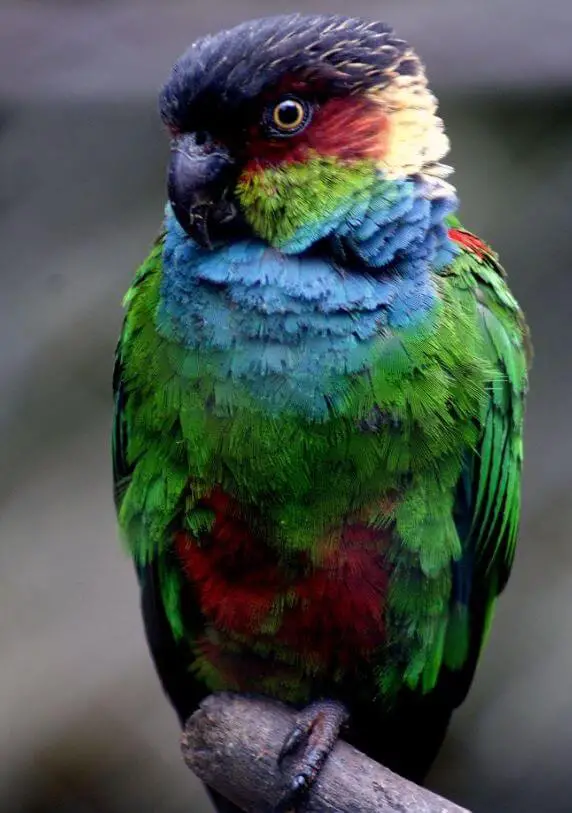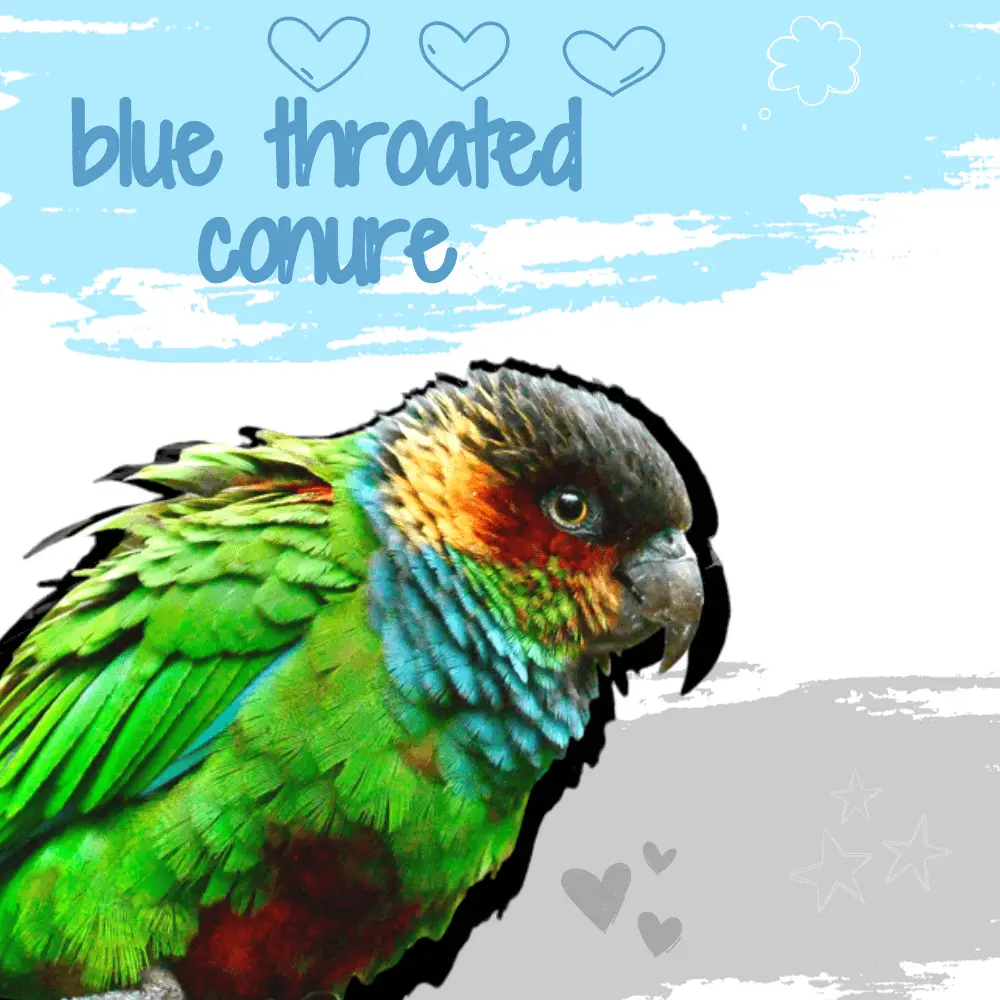Blue throated conure ( Pyrrhura cruentata ) know also ochre-marked conure and red-eared conure is one of the red-tailed parakeets native to South America.
Description
With a length of approx. 30 cm, the Blue-throated Parakeet is the largest species of the Red-tailed Parakeet genus.
The plumage is generally green in color, the crown blackish, the eye region and ear cover reddish brown, the lower cheeks green, and the lateral nape yellowish in color.
The eponymous blue bib, which reaches to the back of the head, is characteristic. Belly spot (in some animals indistinct) and rump are red and the outer flags of the primaries are blue.
The tail feathers are olive on top and brown-red on the underside. The beak and the bare eye-ring are blackish, the iris yellowish, the legs gray. There is no sexual dimorphism. Males and females are indistinguishable in appearance.
The plumage of young birds is duller with less red on the wing bow, the crown feathers still have light red seams and the area around the ears is still reddish in color. The iris is dark.
The clear differences from the other representatives of the genus in coloring and size make it unique in this genus.
Blue throated macaw size
SOURCE: Paul Dinning

Blue throated Conures inhabit eastern Brazil ( Bahia, Espírito Santo, Minas Gerais, and Rio de Janeiro states ) in primary rainforests and forest edges, usually below 400 m, sometimes up to 960 m in Minas Gerais.
Sometimes the species were also seen in cleared areas and occasionally on agricultural land. The range is highly fragmented and has shrunk to isolated areas.
Little is known about their free-living habits, as their camouflage coloration and calm demeanor make them difficult to spot.
They live together in groups of 4 to 10 birds, but also form larger flocks, especially at feeding sites.
They feed mainly on seeds and tree fruits, for example from ant trees ( Cecropia ) and Trema micrantha, but occasionally also seek grain fields.
They are not site-loyal, outside of the breeding season they migrate to other areas in search of food.
Blue throated Conures probably breed during September and October, laying 2 to 4 eggs in a tree hollow. Their breeding behavior is still largely unknown.
Endangerment and Protection
The stock is highly endangered due to the destruction of the habitat ( habitat destruction ). The substitute habitats used by the birds, such as cocoa and banana plantations, are increasingly being converted to pasture.
The remaining stocks are small and appear to be declining, and protection is mostly inadequate.
The species is classified as Vulnerable (VU) by the International Union for Conservation of Nature and Natural Resources (IUCN).
As the only representative of the genus, it is listed in Appendix 1 of the Washington Convention on International Trade in Endangered Species.
It is listed in the EC regulation 709/2010 [EG] in Appendix A and is strictly protected according to the Federal Nature Conservation Act [BG] (Status::s).
The bird is so different from its relatives in coloration, size, and behavior that some experts would like to remove it from the Red-tailed Conure group and place it in a genus of its own.

